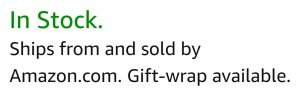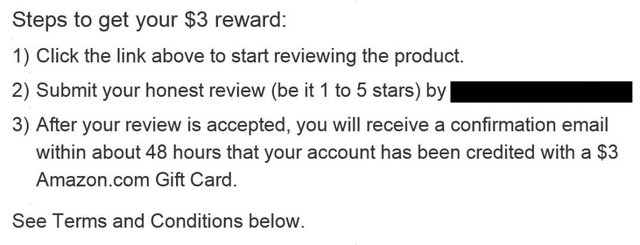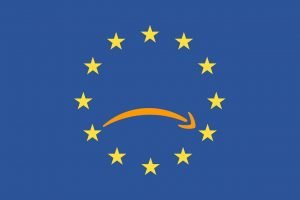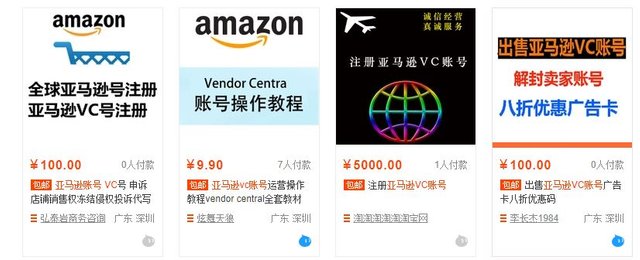
As I've stated in my previous writings on Amazon, to be successful on Amazon is a catch-22. The most basic way to describe it is that a seller's listings receives more exposure when it sells well and in order to sell well it needs more exposure. Products with reviews inevitably outperform products with less or no reviews, meaning a product that is capable of generating early reviews will gain the advantage in sales and from there it's Amazon's own sales ranking system that kicks in so the straggling product will never keep up.
The Vine Giveaway Program
Two years ago, Amazon changes the rules to the chagrin of many sellers and some third-party service providers. Previously, sellers could give their products away to customers or at a highly discounted rate in exchange for a review. The rules were that the seller could do nothing to influence whether they received a negative or positive review. However, the most important part of this system was that you were trading your products for a very high success rate of receiving a review.
Amazon determined that these third-party sources were being used unfairly; too much room for potential rule breaking. The ability to trade products for reviews was shutdown and limited to the Vine program.
Vine members are curated community members on the Amazon marketplace. In order to be a Vine member, you need to be invited by Amazon for your history of actively leaving feedback. A supposed requirement is that the Vine member's feedback is unbiased, although this is suspicious at a glance.
Seller Central vs Vendor Central
It's not clear to most, but Amazon actually has two seller programs. The Seller Central program encompasses approximately half of the sellers on Amazon. The other half are either Amazon's own private label or products that are being sold directly to Amazon before Amazon sells directly to the consumer.
This system of selling directly to Amazon is the Vendor Central platform. The easiest way to tell if a product is being sold through Vendor Central (VC) instead of Seller Central (SC) is the little bit of text in the buy box telling you who is shipping and selling the product. NOTE: This notification is not visible on Amazon's own private label listings due to redundancy.
If a product says it is shipped and sold by Amazon, the product is being sold through the VC platform.
Vendor Central is the invite-only wholesale arm of Amazon. If your product is performing well, Amazon will reach out to get your product on the VC platform. Instead of selling your products on the Amazon marketplace, you're now negotiating business-to-business deals with Amazon.
There are several benefits of being in the VC program which could all be considered unfair advantages. However, the focus here is the Vine program. That's right, the Vine program is exclusive to sellers who are invited to the VC platform.
The Unfair Advantage
A seller who is invited to the VC platform gains access to all the benefits the platform provides for all their products, not just the products Amazon decides to purchase. This means a VC approved seller can launch a new product, immediately do a giveaway, and get reviews on their product.
Seller Central does have the Early Reviewer Program (ERP), but this is a severely handicapped tool that at maximum nets the seller 5 reviews. The ERP program allows the seller to register their product, at the time of writing for the Amazon US Marketplace, at the cost of $60 USD once the first review is received. Amazon assists you in requesting reviews by emailing customers who have purchased your product 4 weeks after the order has been placed offering a $3 Amazon gift card in exchange for a review.
There is also the giveaway option that is available to not only sellers, but even customers on Amazon. You purchase the product using a seller account and set it up as a giveaway through Amazon's frontend system. However, this system provides zero guarantees of review.
When comparing to the VC's Vine Program, the options available to the SC seller are severely handicapped.
The Power of Reviews
Reviews are a very hot and hard to come by commodity. A review-to-sale ratio typically ranges from below 0% up to 10%, where 10% is a very good rate. They are quintessential in boosting sales, by boosting customer confidence. The reality is that it is easier for a customer to justify buying a product that has been reviewed hundreds of times even if the rating may be an average 3-star rating because a product with little or no reviews means it's untested.
Amazon has never done an extraordinary job of notifying customers that a review is being given due to their review/giveaway policies or how that has affected the overall rating of a product. Even when the display has been prominent, the ability to scroll through reviews is an arduous process that most customers don't bother doing. The filters provided do not allow you to single out or exclude reviews given through the Vine Program. Regardless, the average customer relies on the overall ranking of a product without ever bothering to look at individual reviews.
Early reviews ensure early sales, which boost your products rankings. It is only a matter of minor maintenance before the effect snowballs and you outperform your competitors.
EU Trouble
Bloomberg recently reported on these practices as well as some interviews with some Amazon sellers who are critiquing the system. There is a complaint making its way to EU regulators that could put Amazon in the crosshairs of EU unfair competition regulations. However, the complaint seems to focus too much on the unfair competition of Amazon's private label products instead of the advantage of the Vine Review Program as a whole.
It's possible that by focusing on a specific point, the complaint has a better chance of being considered as violating the EU's Unfair Commercial Practices Directive. The focus however undermines the severity of the advantage that is given to those with access to the review program. Unless Amazon opens this service to all sellers or scraps the service entirely, I don't expect they'll escape the grasp of EU regulations. This may spur movement in other countries, or preemptive action from Amazon, but it it'd be difficult to determine whether this type of action will be seen on the Amazon US marketplace.
Amazon's email response Bloomberg in regards to this complaint is a non-answer resembling most safe PR answers.
can select from any eligible product, whether it’s an Amazon private-label product or a product from one of our vendors. The same guardrails that are in place for vendors are in place for our private-label brands.
It fails completely to address the fact that SC sellers do not have any access to a system that remotely resembles the Vine Review Program. Nor does it address the fact that members of the program do not see the products listed by SC sellers.
However, you can see my worry with the complaint as their response does address the issue of their private-label brands. Hopefully EU regulators are able to understand the issue as a whole and see through any facade Amazon may present.
By providing such a powerful tool to VC sellers, Amazon has yet again created a seedy marketplace where VC invites sell for upwards of $50,000 USD. Yet again proof of VC account sales can be easily found on Taobao, a Chinese marketplace.
The Amazon Marketplace was successful because sellers believed in their ability to build a business on the platform. As Amazon continues to expand its own private-label and alienate sellers, the number of sellers will inevitably shrink. Regardless, Amazon has a responsibility not just to sellers, but also to customers, to ensure these types of unfair advantages are kept under control.
Posted from my blog with SteemPress : http://leonox.me/2018-10-18/posts/amazon/amazon-news/amazons-vine-review-program-being-eyed-by-eu-regulators-for-unfair-practices/



